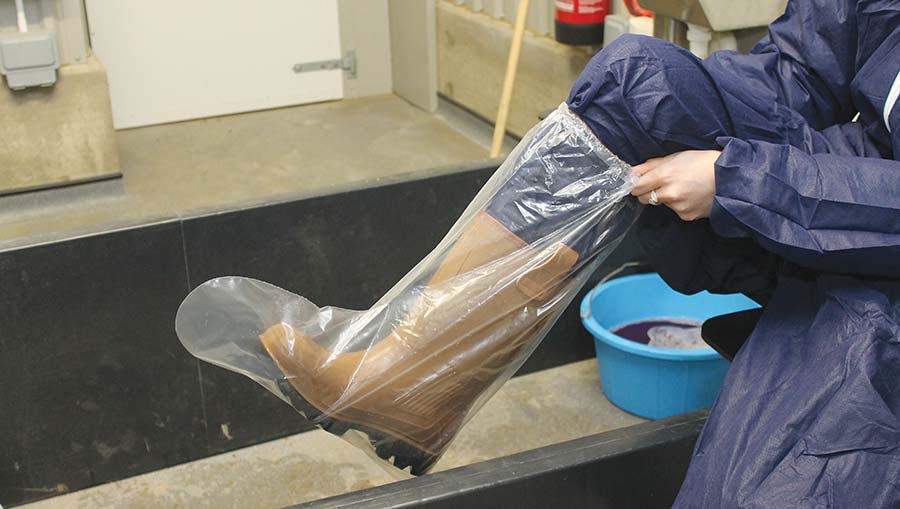Biosecurity is key to keeping avian influenza at bay

Preparation is everything when it comes to dealing with avian influenza (AI), and every producer and company in the sector need to have a detailed contingency plan in place before there is an outbreak.
“If the worst comes to the worst and you get an outbreak, you must give the Animal and Plant Health Agency [APHA] as much detailed information as possible as quickly as possible, so it can get on with the job of containing the disease,” says British Egg Industry Council chairman Andrew Joret.
“And it is important to do this in peace time. If you leave it until you have a problem it will be too late.”
See also: UK bird flu costs hit £50m, poultry health roadshow told
Farm contingency plan
At farm level, a suitable contingency plan should include the following:
- An up-to-date farm map, plus full production records on hand, including age and breed of bird, to provide the APHA with an immediate picture of the site
- Grid references and County Parish Holding (CPH) numbers for each site
- A farm contact list, with details of everyone who works on the farm, all contractors and all suppliers, with their phone numbers
- An accurate visitors’ book, identifying everyone who visits the farm and whether or not they have entered a biosecure area. If they have not entered a biosecure area, the APHA may be able to lower their risk status when it is doing its tracings exercise
- Storage facilities. The poultry farmer should ensure there is enough storage should the unit go down with AI, or be in a restriction zone. It should always be possible to move feed on to the unit, but what if eggs or birds cannot be moved off site? Manure may also need to be stored – a particular issue for multi-tier and colony units. And what about mortalities?
Company contingency plan
A company contingency plan should incorporate the following:
- There should be a crisis management committee, with one person charged with the job of monitoring the sector for signs of an AI outbreak. Chances are newspapers or social media will be first to announce it, as the APHA cannot issue a statement until AI is confirmed
- Designation – packing stations, slaughterhouses, feed mills and hatcheries must all ensure they qualify for designation ahead of any disease outbreak
- Communication plan. There must be a central number with conference call facilities so all staff in the company can communicate centrally
- Media plan. A single person should be identified as press spokesman, with prepared statements drafted in advance
- Resilience test. Ask yourself how you would cope if you lost the use of a particular plant or packing centre. Would you survive? Are there opportunities to co-operate with competitors?
- Employee protection. There are guidelines available to ensure your staff are not put at risk
- Vehicle and personal movements. All must be logged so you know who is where when. This will help when it comes to tracings
Optimum biosecurity – the model farm
- Location. Avoid open water or net it off. Site new poultry sheds at least 1km away from a neighbouring unit
- Perimeter fence. This defines the biosecure area and should have a single point of entry to control all movements. Automatic spray systems should disinfect vehicles coming on site
- Movement controls. Visitors should be kept to a minimum and made to park outside the fence. Is it possible for feed lorries to discharge without coming in, and could dead birds be collected this way? Staff should be banned from keeping poultry. Maintenance visitors should be provided with farm tools, not bring their own
- Buildings. Must be vermin proof. Must have a cleanable, concrete apron. Rainwater should be collected from roofs and taken away with dirty water following wash down
- Outdoor production. Buildings used in free-range systems should be as biosecure as those used for indoor production
- Farm size. Some farms can be too big to guarantee optimum biosecurity
